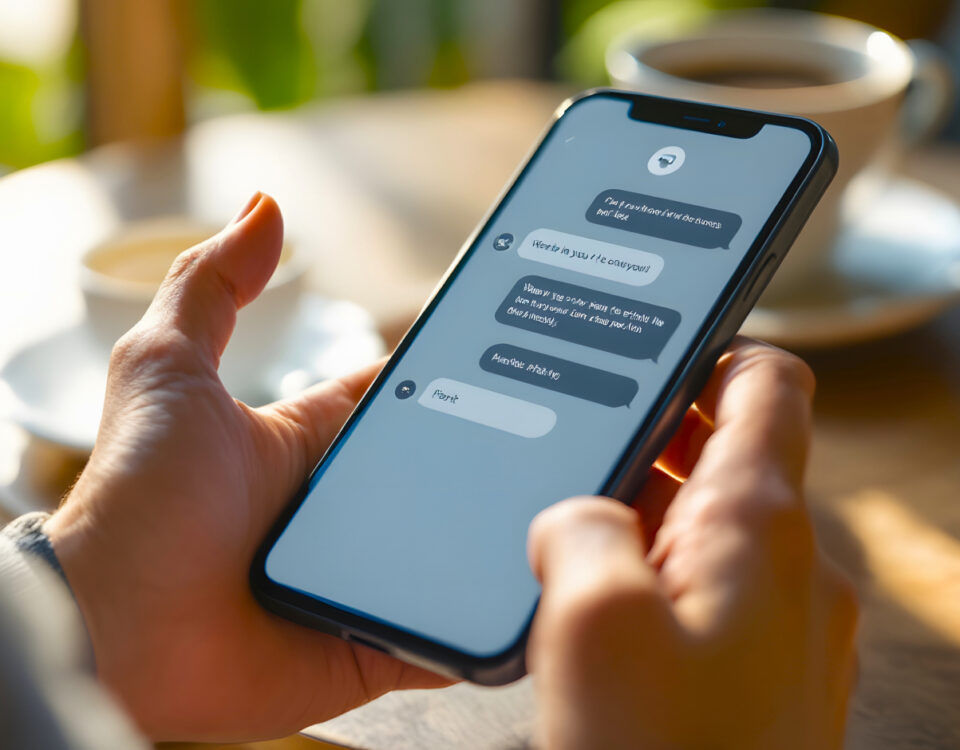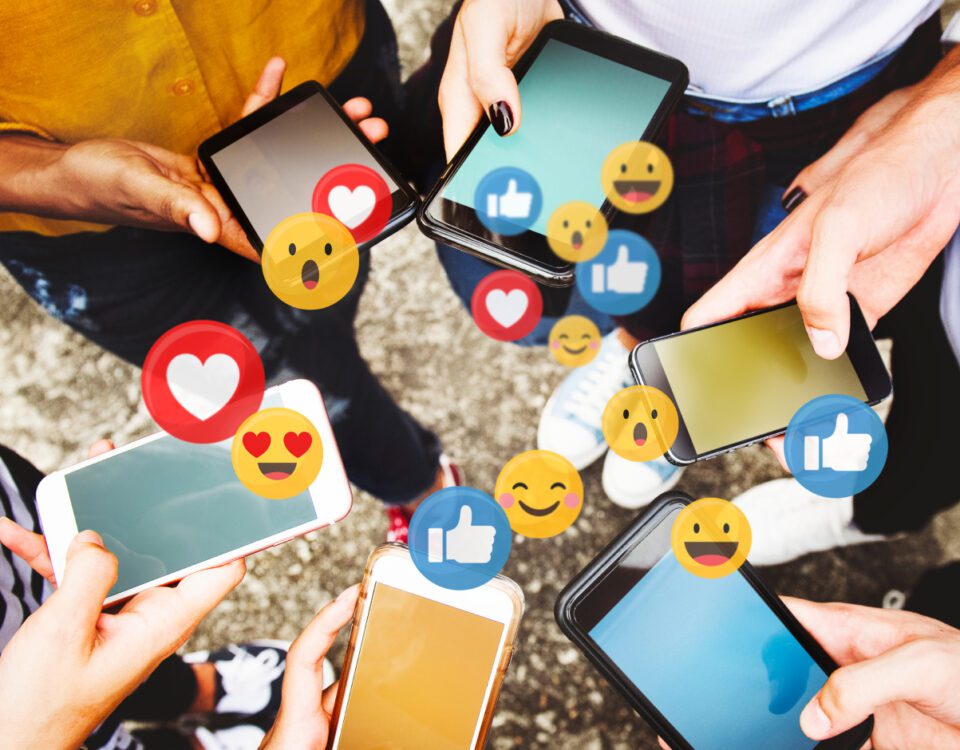Share
With more than 1 billion people with disabilities in the world and 53.6% of the global population now using social media, it’s vital for both casual users and businesses to ensure that the content they distribute is accessible by everyone. Improving accessibility means making social platforms usable by as many people as possible, particularly those with disabilities. This may include those who are blind or visually impaired, people who are deaf or have some form of hearing loss, and people with dyslexia or other cognitive learning disabilities.
Online accessibility is especially intended to help people who rely on assistive technologies to use social media - but inclusive content is beneficial to everyone, as it encourages diversity across audiences and helps raise awareness of the difficulties faced by disabled users. Removing barriers to your content is not only an ethical practice, but will help boost the reach of your messaging too. Here are some ways to make your social channels more accessible.

Add Alt Text to Images
Descriptive captions and alternative text (alt text) allow people with sight impairments to visualise images when they can’t physically see them. Several social media platforms use object recognition technology to provide descriptions automatically, but there are limits to its reliability, meaning it’s better to add custom text if you can. The following help articles explain how to do this on the big four:
SMM platforms like Sprout Social and Hootsuite also allow users to add alt text when posting images via their publishing tools.
Camel Case
You’ve undoubtedly heard of upper case and lower case, but how about camel case? Also known as camel caps or more formally as medial capitals, this writing form involves typing phrases without spaces or punctuation and instead indicating the separation of words with capitalised letters, i.e. CamelCase. This format should be used in multiple-word hashtags wherever possible, as screen reader software commonly reads out uncapitalised hashtags as nonsensical strings of letters or wrongly interprets phrases.
Periodic reminder that it’s best to use initial caps for your hashtags: #AccessibleHashtags.
— Zoë Bijl (@ZoeBijl) October 22, 2019
This way assisitive technology will announce the words in the hashtag rather than a long string of characters. It’s also a lot easier to read.#themoreyouknow
vs#TheMoreYouKnow
Captions and Subtitles
When it comes to video content, you can make things easier for deaf people and those with other hearing impairments by adding closed captions. Differing slightly from subtitles, which provide text or translations for spoken dialogue only, closed captions give a more in-depth description of all relevant sounds, including everything from background music to audio cues like doorbells, car horns, footsteps or phones ringing. Plus, with 85% of videos on Facebook being watched with the sound switched off, captions and subtitles can be beneficial not just for your disabled viewers but for your wider audience too. In May this year, Instagram also announced the arrival of captions stickers for Stories.
Sound off 🗣
— Instagram (@instagram) May 4, 2021
…with sound off 🔇
Now you can add a captions sticker in Stories (coming soon to Reels) that automatically turns what you say into text.
We’re starting in a handful of countries and hope to expand soon. pic.twitter.com/OAJjmFcx4R
Descriptive Audio
Conversely, descriptive audio can sometimes be useful for viewers with sight loss. Due to most video content on social media being largely conversational, AD is rarely needed as context is usually conveyed sufficiently via the existing audio track rather than through visual cues. However, visual-heavy content such as animations is where an AD soundtrack will most likely be required. Here’s an example clip to demonstrate the kind of assistance it provides. Although synthesized voice options are available, sourcing a live vocal recording is much better as the track will sound more natural - but this can be expensive. For creators on a budget, a good alternative can be to add a description of what happens in the video either in the main body of your post or as a follow-up post.
Don’t Spam Emojis
We all love including emojis in our social media content - they add colour, lightheartedness and, as the name suggests, emotion to our posts, and can help break up long blocks of text, making them less dull to read. However, screen readers and other forms of text-to-speech software read out descriptions for every single emoji used, and with some of these descriptions being fairly lengthy, such as “smiling face with three hearts” or “rolling on the floor laughing”, long chains of emojis can become irritating or repetitive for listeners. Including a few here and there in your posts is acceptable - just make sure not to go overboard or type too many in a row.
On Bonfire Night last year, the ever-popular smoothie brand innocent posted a playful thread of emoji-filled tweets to tell a funny story about a failed firework display, using lots of black squares to represent the night sky. The brand received a reply from a disabled user explaining the lack of accessibility caused by the barrage of emojis and made sure to apologise, before following up the thread with a screen reader friendly version of the story.
Thanks to the person who pointed out emojis sound rubbish on screen readers. Just hearing "medium black square" over and over again doesn't quite capture the beauty of bonfire night - sorry about that. This image has alt-text on it describing the whole thread. pic.twitter.com/PpJzzZeLb3
— innocent drinks (@innocent) November 6, 2020
Contrasting Colours
Colourblindness affects 1 in 12 men and 1 in 200 women globally, making colour contrast an important consideration when sharing graphics and designed imagery on social media - notably those featuring text. It’s a general rule within graphic design that colours next to each other on the colour wheel shouldn’t be used together in designs where significant information is being conveyed, as they make wording difficult to understand. Black and yellow is commonly cited as the colour combination with the highest legibility.
Avoid “Custom Fonts”
Tweets may look cool and quirky when you type words in italics, bold, or other forms of special lettering (many of which are actually mathematical characters, not fun fonts) but assistive technologies are unable to translate these symbols properly, creating jumbled and confusing passages of speech like in the example below. It’s best to steer clear of custom characters and keep things simple, using only the default text style provided by each social media platform.
You 𝘵𝘩𝘪𝘯𝘬 it's 𝒸𝓊𝓉ℯ to 𝘄𝗿𝗶𝘁𝗲 your tweets and usernames 𝖙𝖍𝖎𝖘 𝖜𝖆𝖞. But have you 𝙡𝙞𝙨𝙩𝙚𝙣𝙚𝙙 to what it 𝘴𝘰𝘶𝘯𝘥𝘴 𝘭𝘪𝘬𝘦 with assistive technologies like 𝓥𝓸𝓲𝓬𝓮𝓞𝓿𝓮𝓻? pic.twitter.com/CywCf1b3Lm
— Kent C. Dodds (@kentcdodds) January 9, 2019
Summary
While no social media platform is 100% accessible just yet, there are evidently many processes that businesses and creators can implement to improve the usability of the content they share. It’s crucial for brands to show that they care about people with disabilities and that their social channels are diverse, accepting spaces where everyone is welcome to engage and interact. Keep these tips in mind when you assemble your next content plan.









